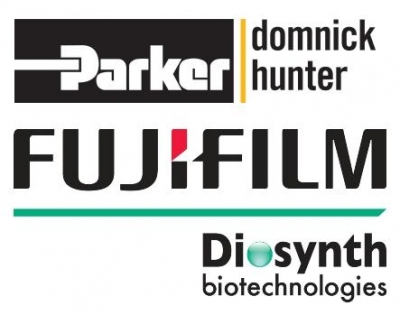Case Study: Automating the final filtration & dispensing of biologics in a closed single-use system
Single-use bioprocess technology has become near ubiquitous within biologics manufacturing facilities. Benefits such as the avoidance of product cross contamination, flexibility process configurations and reduced capital expenditure requirements are especially attractive to contract manufacturing organizations. Single-use processing steps can be manual, semi-automated or fully automated. Many biomanufacturers are still evaluating the level of automation that is appropriate within their operations before making facility investments they will need to live with for years to come.
This webinar will look at a project to automate a single-use, final bulk filtration and dispense processing step at Fujifilm Diosynth Biotechnologies, a biopharmaceutical contract manufacturing organization. The decision-making process used to proceed with the project, the project execution and the outcomes of the project will all be described.
A key component of the project was to define the level of automation that was appropriate for Fujifilm Diosynth Biotechnologies in order to deliver the required benefits of process control and consistency, increased speed and operational flexibility.
Register now to understand the level of single-use automation that is appropriate for your biomanufacturing facility.
www.fujifilmdiosynth.com
www.parker.com/dhsingleuse
Presented by

Dr Paul Bird,
Head of the Manufacturing Engineering Group, Fujifilm Diosynth Biotechnologies
Dr Paul Bird works for Fujifilm Diosynth Biotechnologies as Head of the Manufacturing Engineering Group where his responsibilities include the transfer of technology and processes from R&D to cGMP manufacturing. Paul has a PhD in Biochemical Engineering (UCL) and recently completed the Supply Professionalism Programme at Warwick University.

Nick Hutchinson,
Market Development Manager, Parker domnick hunter
Dr Nick Hutchinson has a Masters and Doctorate in Biochemical Engineering from University College London, UK where he focused on laboratory tools for rapid bioprocess development and characterization. He then worked at Lonza Biologics in an R&D function investigating novel methods for large-scale antibody purification before moving to an operational role scaling-up and transferring manufacturing processes between Lonza sites in the UK, Spain and USA.
Nick now works in Market Development at Parker domnick hunter where his focus is in bringing Parker's strengths in Motion & Control to Bioprocessing. This will enable our customers to improve the quality and deliverability of existing and future biopharmaceuticals.

Download Slides
Please login to download the slides
Key Learning Objectives
- Understand the potential benefits of automating single-use bioprocessing steps
- Understand how to evaluate the level of automation that is appropriate for your bioprocessing step
- Understand critical success factors in implementing a single-use bioprocess automation project
- Understand the capabilities of the automated solution developed by Parker domnick hunter
Audience
- Cell Culture Development Scientists
- Purification Development Scientists
- Quality Assurance
- Automation Engineers
- Production Managers
- Manufacturing Science and Technology





